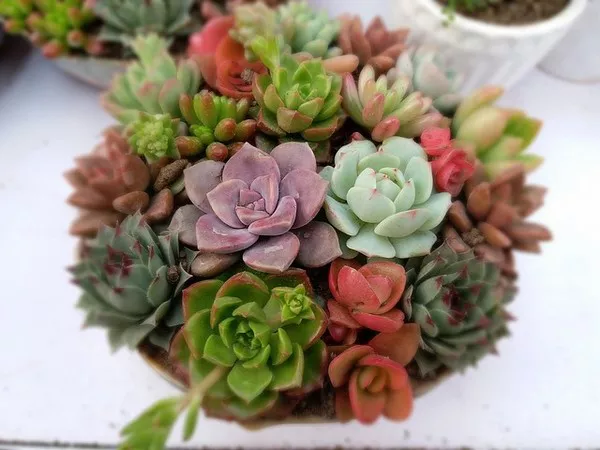Succulents have taken the world of indoor gardening by storm with their unique appearance and easy maintenance. These hardy, drought-resistant plants come in a wide array of shapes and sizes, making them the perfect addition to any indoor space. However, despite their reputation for being low-maintenance, proper watering is key to ensuring the health and longevity of your indoor succulents. In this comprehensive guide, we will delve into the art of watering succulents indoors, providing you with all the information you need to keep your succulents thriving.
Understanding Succulents
Before we dive into the specifics of watering succulents, it’s essential to understand the unique characteristics of these plants. Succulents are adapted to thrive in arid environments, which is why they store water in their leaves, stems, or roots. This adaptation allows them to withstand extended periods of drought. However, when we grow succulents indoors, we need to replicate their natural habitat as closely as possible to ensure their well-being.
Choosing the Right Pot and Soil
Selecting the proper pot and soil is the first step in ensuring the success of your indoor succulents. Here are some key considerations:
Pot Selection: Succulents require pots with good drainage. Terracotta pots, ceramic containers with drainage holes, or plastic pots with drainage are ideal choices. The drainage holes prevent excess water from accumulating at the bottom of the pot, which can lead to root rot.
Soil Mix: Succulents prefer a well-draining soil mix. A commercial succulent or cactus mix works well, or you can create your mix by combining regular potting soil with perlite or coarse sand to improve drainage.
Watering Guidelines
Now that you’ve set up your succulent’s home, let’s explore the dos and don’ts of watering:
The Soak and Dry Method: This is a golden rule for succulent care. Water your succulents thoroughly but infrequently. Allow the soil to dry out completely between waterings. Stick your finger into the soil about an inch deep; if it’s dry, it’s time to water.
Avoid Overwatering: Overwatering is one of the most common mistakes in succulent care. These plants are designed to withstand drought, so they’re quite sensitive to excess moisture. Only water when the soil is dry to prevent root rot, a common issue in overwatered succulents.
Use the Right Amount: When you water, give your succulents a good soak. Water until you see water coming out of the drainage holes. This ensures that the entire root system gets moistened. Empty the saucer under the pot to prevent the plant from sitting in standing water.
Frequency: The frequency of watering will depend on various factors, including the type of succulent, the pot and soil, and the environmental conditions. On average, indoor succulents typically require watering every 2-4 weeks, but it’s essential to adapt to your specific plant’s needs.
Seasonal Variations: Adjust your watering schedule to the changing seasons. Succulents typically require more water during their active growing season in spring and summer, and less in the dormant period of fall and winter.
Pay Attention to Signs: Your succulents will communicate their water needs to you. Look for signs of thirst, such as wrinkled or deflated leaves. When you notice these signs, it’s time to water.
Humidity and Ventilation: The humidity in your indoor environment can affect how quickly your succulents’ soil dries out. Ensure proper ventilation in your space to help maintain the right level of moisture for your plants.
Additional Tips for Successful Succulent Watering
Here are some additional tips to help you master the art of watering succulents indoors:
Water at the Right Time: Water your succulents in the morning so that any excess moisture on the leaves or in the rosettes has a chance to evaporate during the day. Watering in the evening can lead to prolonged periods of high humidity around the plant, which can promote rot.
Use a Watering Can with a Narrow Spout: A narrow-spouted watering can allows for more precise watering, helping you avoid getting water on the leaves, which can cause damage or rot.
Fertilize Sparingly: While water is essential, succulents do not require heavy feeding. Fertilize your plants sparingly, typically during their growing season, with a diluted, balanced, liquid fertilizer.
Inspect for Pests: As you water, take the opportunity to inspect your succulents for any signs of pests. Overwatering can sometimes attract insects like fungus gnats, so early detection is crucial.
Isolate Overwatered Plants: If you suspect that you’ve overwatered a succulent or if it shows signs of rot, isolate it from your other plants to prevent the spread of disease.
Conclusion
Watering succulents indoors may seem like a straightforward task, but it requires a keen understanding of the needs of these unique plants. By choosing the right pot and soil, mastering the soak and dry method, and paying attention to the specific requirements of your succulents, you can create an ideal environment for these beautiful, low-maintenance plants to thrive. Remember that each succulent is unique, so it’s essential to monitor your plants and adjust your care routine as needed. With the right knowledge and care, your indoor succulents will continue to bring beauty and serenity to your space for years to come.


